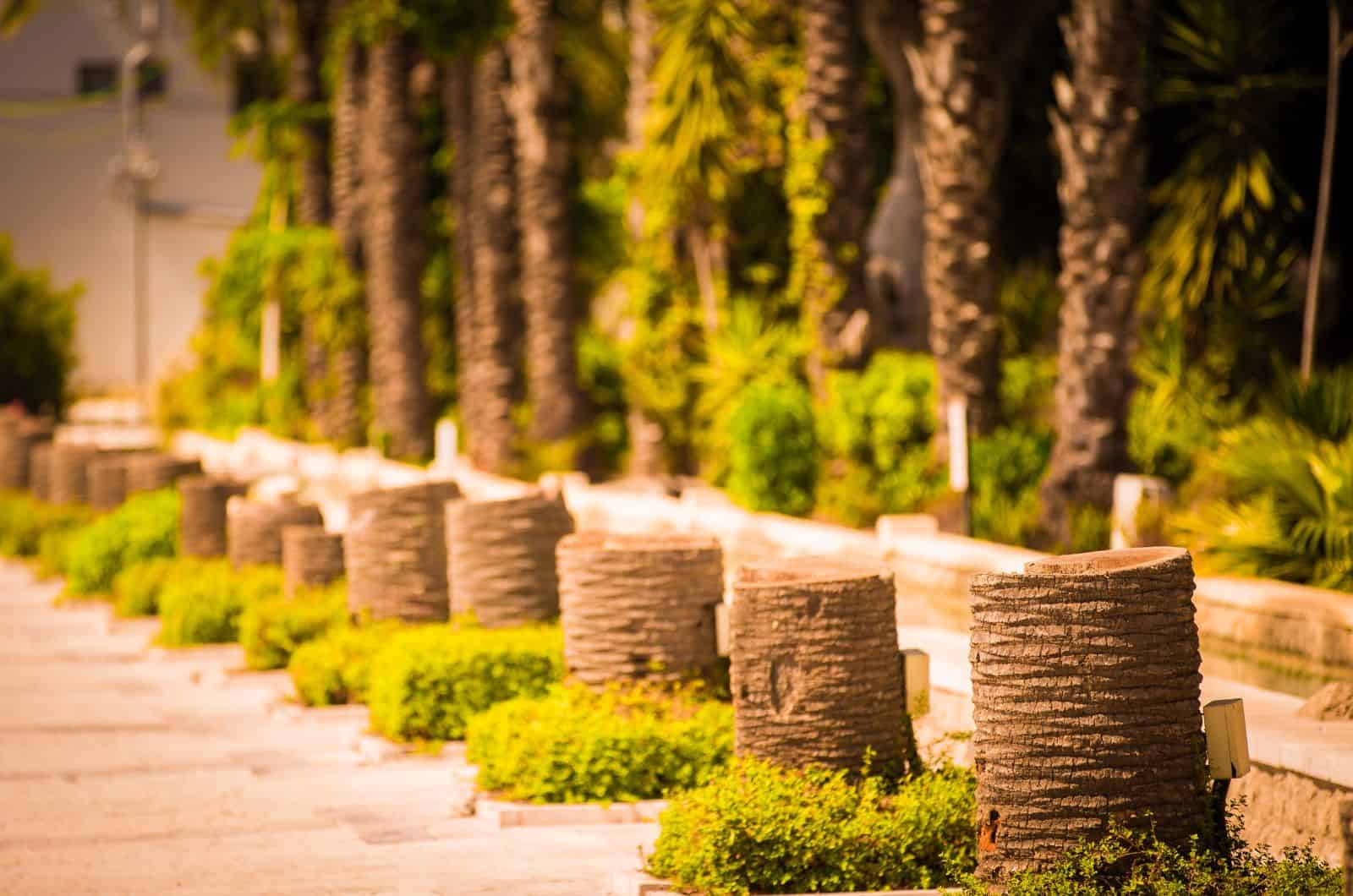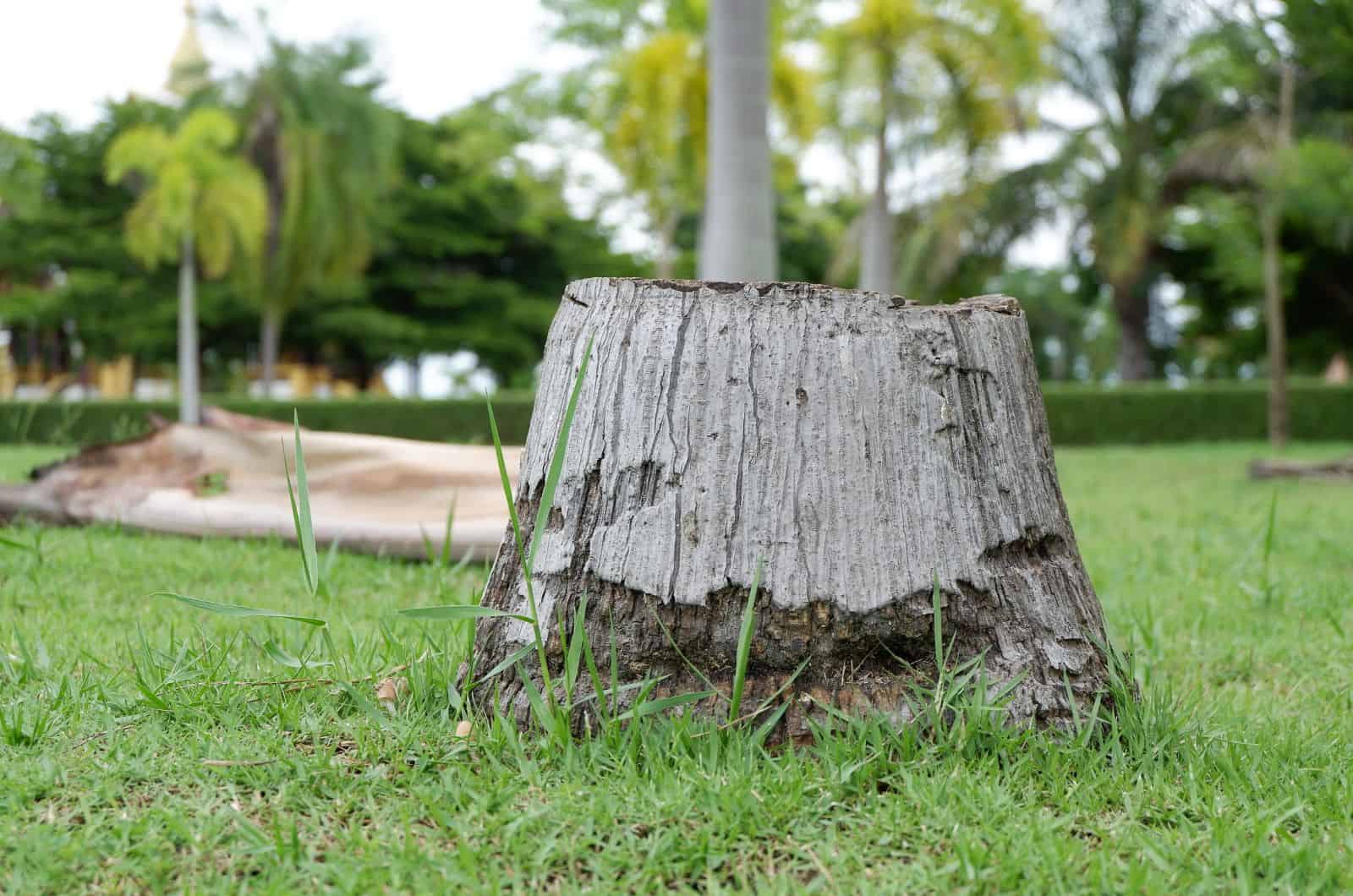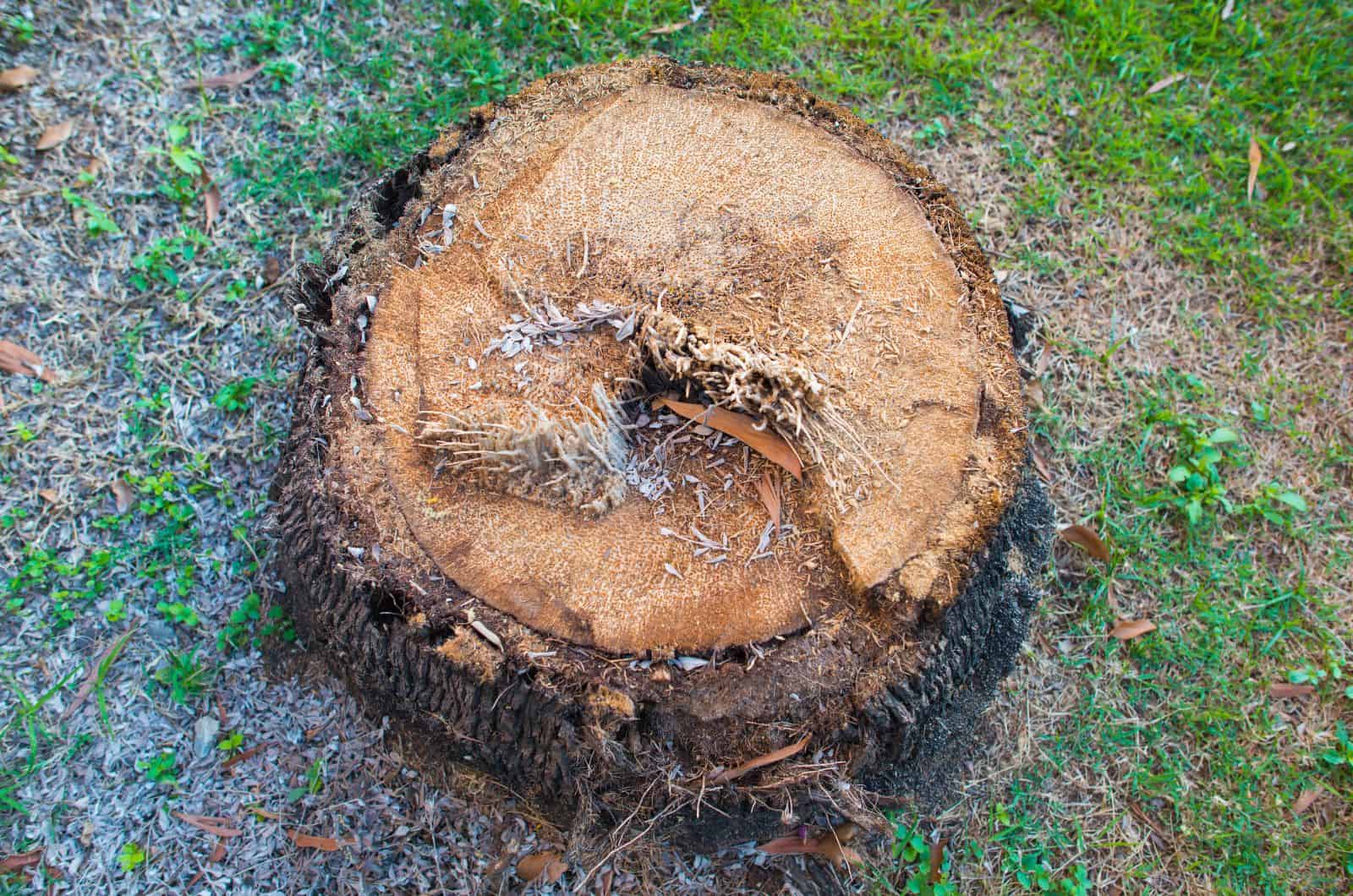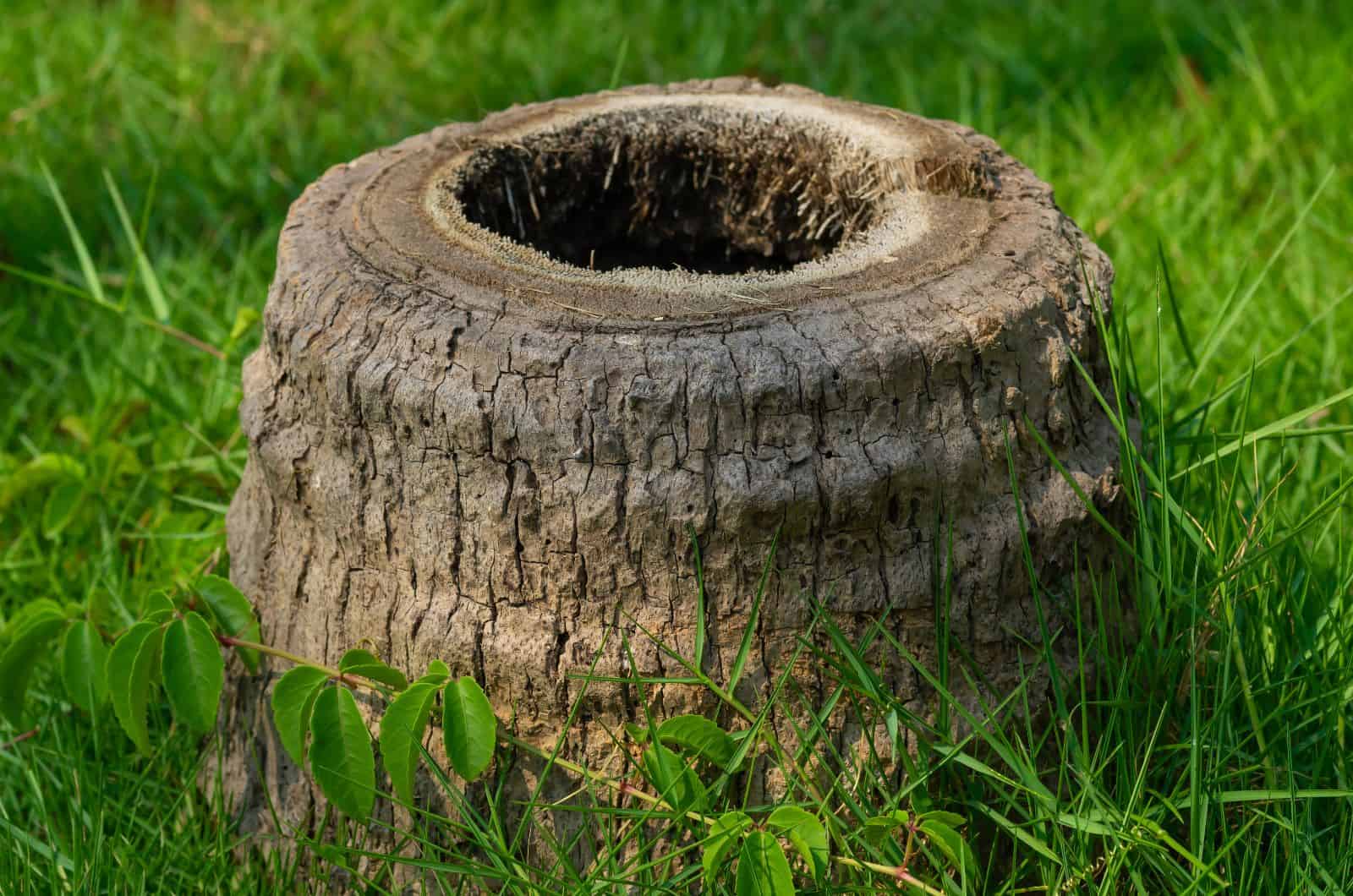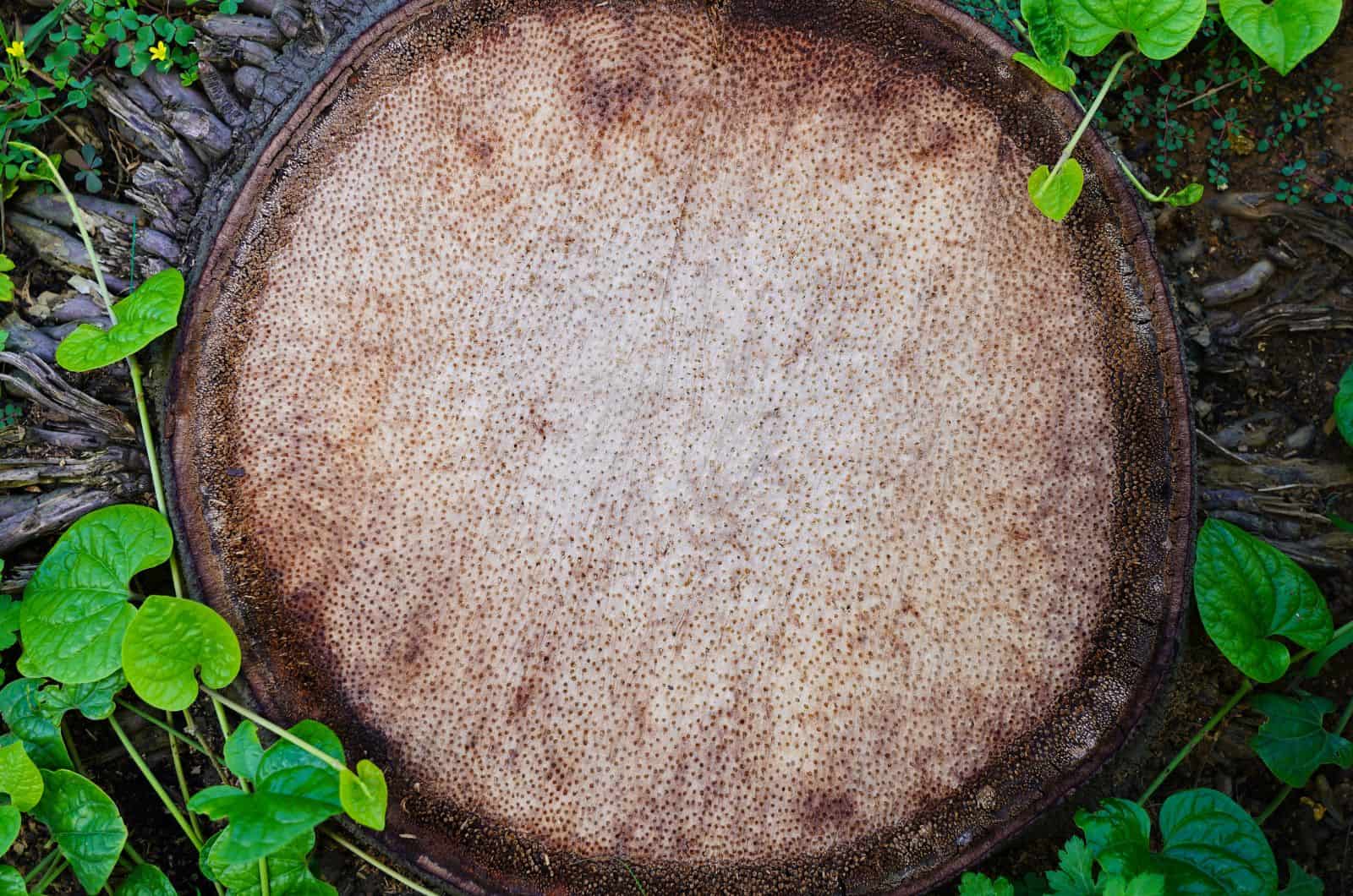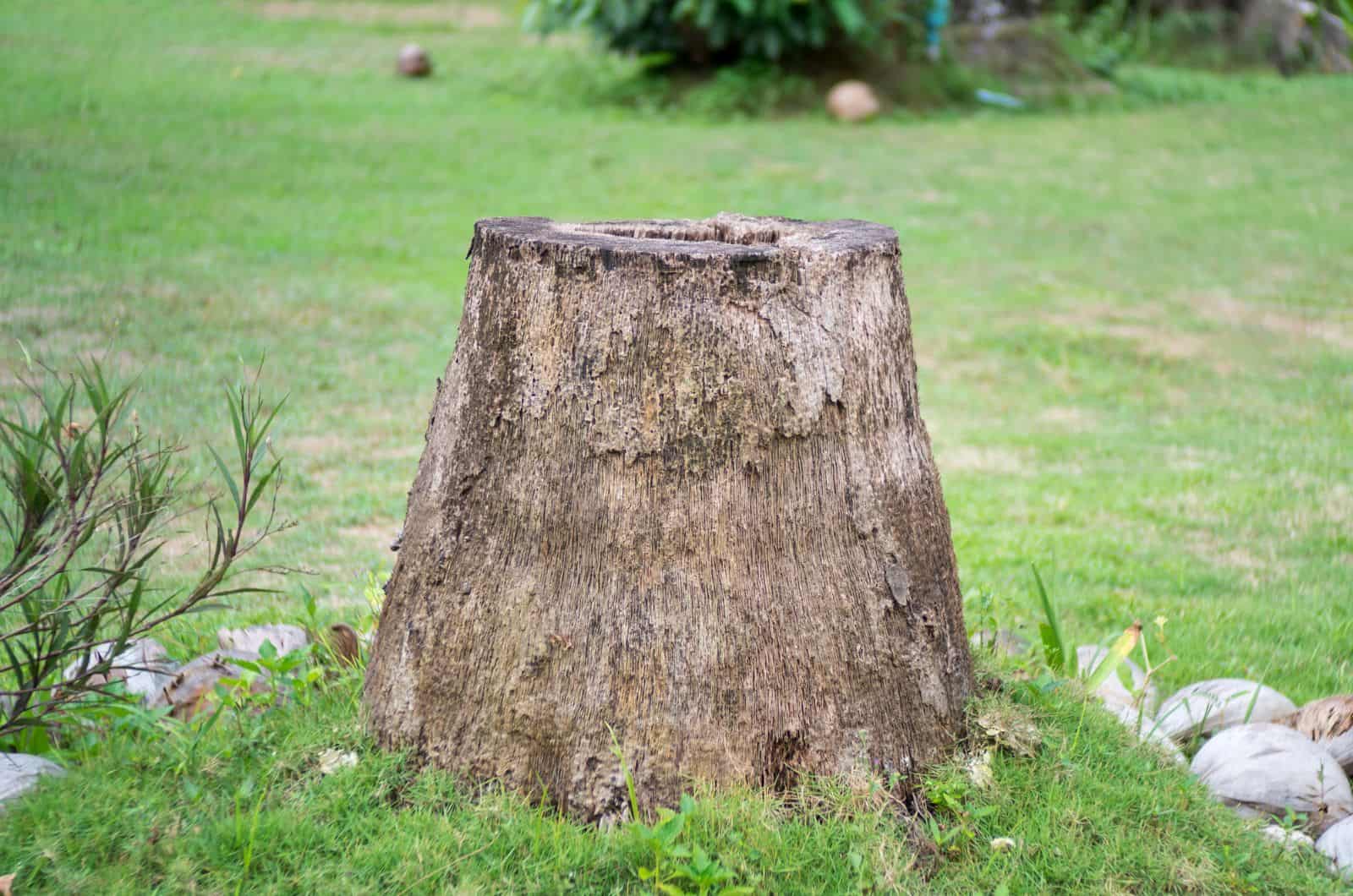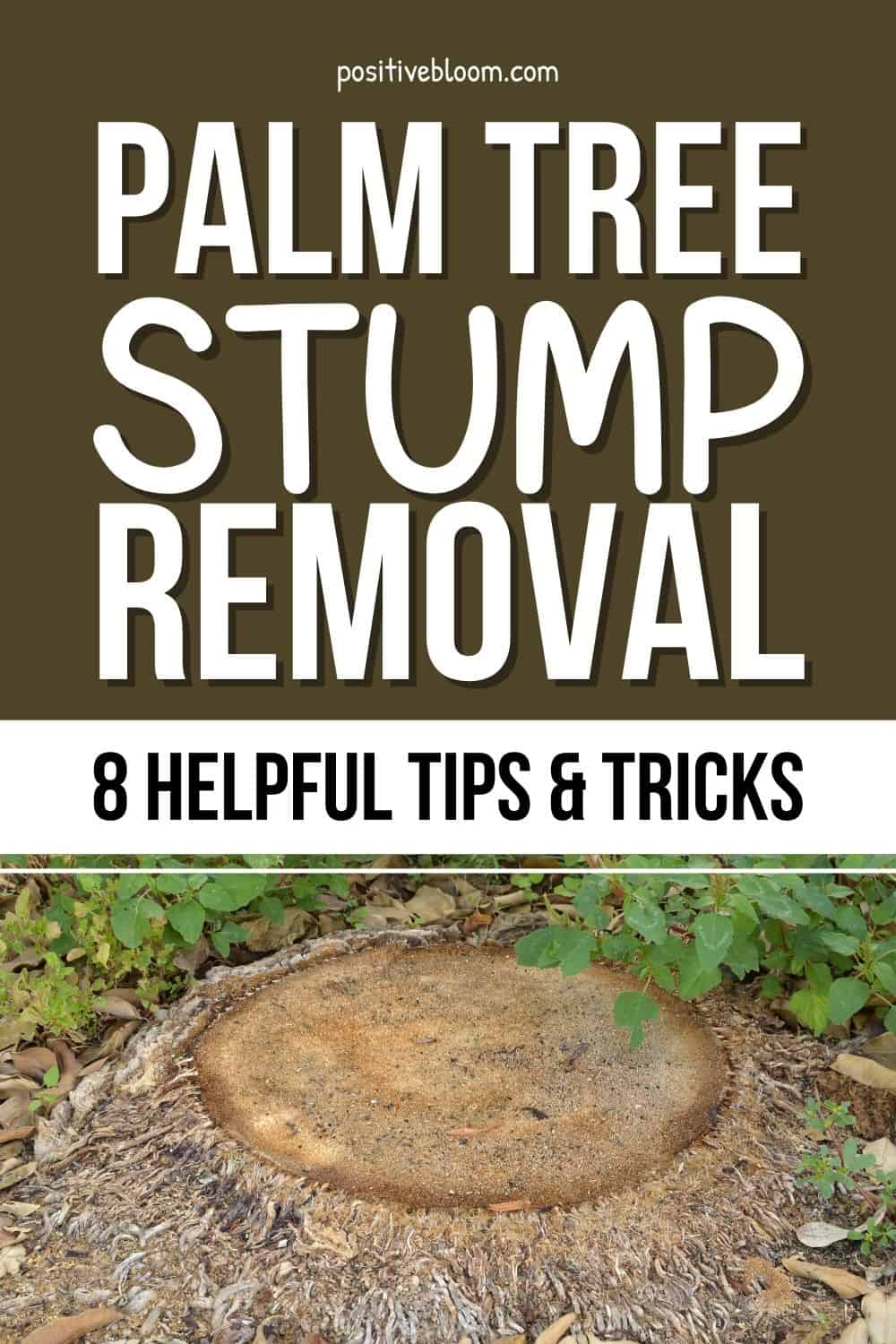Stumps can be quite a nuisance, and there are many homeowners that have dealt with dried-out, tree left-overs in the middle of their front yard!
You see many palm tree stubs in Florida, where they are quite popular (palm trees, not the stubs), and we know how difficult they can be to kill.
Thankfully, there are effective palm tree stump removal methods, and if nothing works, you can always call a professional as they have all the equipment and expertise to get rid of them for you.
You might feel reluctant to remove tree stumps and disturb the flora, but the benefits of their complete removal outweigh the drawbacks, and we’ll discuss this in more detail in the paragraphs below.
Let’s take a look at some great stump removal methods!
8 Palm Tree Stump Removal Methods
Removing tree roots with bleach or other effective methods may sometimes be necessary as they can crawl up into sewer lines, taint the overall landscape, or simply be in your way when completing chores.
Killing and getting rid of palm tree stumps is often necessary because they sometimes lead to more problems.
Therefore, we researched the best methods of removing these stumps that even an amateur arborist can do! Of course, you can always call a pro if none of your DIY methods and techniques seem to help.
1. Dig Out The Stump
Digging out the stump is one of the first things that comes to mind when it’s time to get rid of one.
However, the root ball of your palm tree can be quite extensive, and removing it by hand isn’t always possible – but you won’t know unless you try.
Small palm stumps usually have a shallow root system and can be dug out fairly easily with just a pick and shovel. Sometimes you won’t even need a pick!
Slightly larger stumps cannot be removed with just a regular shovel as it’s too labor intensive, so you might need to use an automatic one.
This method does take a lot of work but is highly rewarding, so check out our step-by-step guide below.
How To Remove By Digging
Step 1. Use a chainsaw to cut the stump as low as possible, which will make it easier to separate the parts and remove them later.
Step 2. Dig around the stumps and cut off any roots you can see.
Step 3. Continue digging and remove the soil to entirely expose the root ball.
Step 4. Grab your chainsaw again and use it to cut the stump in four equal parts, just like you would cut a cake.
Step 5. Hammer stakes into the cuts to further detach the trunk.
Step 6. After the parts have separated even more, use a crowbar to split them and remove them one by one (you might need an ax to completely pull the separate pieces of stump out).
Here’s a video that’ll help you remove tree stumps as effectively and quickly as possible:
2. Grind The Stump
If you don’t feel like doing exhausting work all day, you can use a stump grinder to efficiently deal with all the stubs.
As the name suggests, you’ll be stump grinding the leftover tree trunks down to soil level, so they won’t be an eyesore any longer.
These machines are quite effective and can even stop some types of trees from sprouting.
You probably don’t own a tree stump grinder, but you can always hire one at your local tool hire outlet.
Unlike the time-consuming work of digging the stump out by yourself, this method is quite fast – you just have to run the grinder over the stump back and forth.
Adjust the grinder so that it covers the roots as well, and just keep grinding until everything’s gone. After you finish, you can use wood shreds and chips to mulch your plants.
As this machine has really sharp blades that scatter wood chips everywhere, you should wear some safety gear like protective shoes and a jacket, head protection, goggles, and gloves.
If the stump is quite tall, you should shorten it with a chainsaw as much as possible before using this machine.
Thankfully, you can always use a stump grinding service to get the job done quickly and efficiently.
3. Use Heavy Machinery
Sometimes the tree stump is so large that you cannot get rid of it with a regular shovel. In that case, heavy machinery such as diggers and backhoes are a great option.
It might seem a little extreme, but the size of the stump dictates the removal method, and sometimes this is the only option. You can always call a tree removal company to free your garden of this nuisance.
One of the biggest downsides of this method is the cost. You’ll probably have to pay for the transport of the machine to your place and the time and fuel spent while using it. Removing just one stump with such heavy-duty equipment may be too much.
Of course, if you have to remove quite a few stumps, it might be reasonable to rent one of these machines.
The only problem is that operators may not dispose of the stumps, so you’ll still end up with them even after removal.
Backhoes and diggers can make a mess, and it just might not be worth all the trouble of turning your yard into a construction site, so it’s best to contact a tree removal service for large stumps.
4. Use Tree Stump Killers
Chemicals are an excellent way of removing useless, invasive, or unsightly plants from your garden. You can use them to kill the moss on the tarmac or to remove tree stumps. Sadly, you cannot use the same products because what seems to work for moss might not be strong enough to kill a stump.
Using tree stump killers doesn’t make the tree stub magically disappear, but it does make it more porous.
They are then incredibly easy to dig out, and you can quickly burn them too.
The most common ingredients in tree stump removers are potassium nitrate, triclopyr, glyphosate, and picloram.
However, you cannot just pour them on the stub and hope they work. You will have to drill a few holes and fill them up with a removing agent.
Chemicals take about 3-6 months to rot a tree, and some of them can be quite toxic to the flora and fauna in your garden and the environment in general.
Therefore, it’s best to use less dangerous products such as potassium nitrate or even nitrogen-based fertilizer as this mineral speeds up decomposition.
Finally, you should always use protective gear, goggles, and gloves because chemicals may be abrasive and cause skin irritation, severe burns, or photo-contact dermatitis.
A Step-By-Step Guide
Using tree stump removers is fairly easy, but we still compiled a list of things you ought to do to help guide you through the process:
Step 1. First, reveal the sides of the palm stump (you can use a shovel to dig around it).
Step 2. Drill holes (12 inches deep and 1 inch in diameter) in the stump’s top and sides.
Step 3. Pour tree stump killer into the holes as indicated on the package.
Step 4. Pour hot water into the holes so the granules can dissolve and start working. Keep adding more water for a couple of days just to make sure that the chemical has dissolved completely.
Below you can learn more about using Spectracide granules and see some tips for removing the tree stump afterward:
5. Rot The Stump Naturally
If you feel reluctant to use chemicals that may poison your garden, you can always turn to natural solutions. We mentioned using nitrogen-based fertilizers for rotting tree stumps, but there are also organic sources of this mineral that can help you get rid of the stump.
Many flowers like roses and sunflowers love coffee ground fertilizers because they are rich in nitrogen, but you can also use the leftovers to remove palm tree stumps.
You can use chicken manure, bone meal, and even grass clippings separately or combined.
Simply cover the stump with one or more of these organic fertilizers and then check it in a couple of months to see the progress. It might take longer than using the chemical option, but at least the soil won’t suffer any lasting damage.
6. Burn The Stump
Palm tree fronds are an amazing addition to any landscape, but if the tree has died out and you’ve exhausted all possible methods of bringing it back, you will have to cut it.
The stump that remains afterward only adds insult to injury, so it’s only natural to want to remove it.
Burning it may seem a little harsh and not eco-friendly, but we want to make sure you have all the options to make an informed decision. It is an effective method and can save you some money you would’ve spent on tree trimming company services.
Burning the stump isn’t as simple as lighting it on fire, and I’d recommend rotting the stump first to make this method more efficient. After that, pour gasoline over the stump and make sure it has penetrated deep into the stub.
When you’re ready, light the stump on fire.
You shouldn’t leave the burning site often, and you should monitor the fire since it could quickly get out of control and endanger everything in the vicinity.
It might burn for hours on end before the smoldering stops, so you’ll have to be there for a while.
Another downside is that it emits unnecessary carbon gasses into the atmosphere, which could be avoided by using another removal method.
7. Incorporate The Stump In The Landscape
Who says that you have to remove palm tree stumps? You can simply incorporate them into your landscape design and make tree-stump chairs and tables.
You could also just cover it up with soil and incorporate the mound into your garden, or even build a rockery on top, leaving no trace of a stump.
Palm tree roots won’t take over your entire yard, so you don’t necessarily have to remove them. You could research some ground cover plants such as bellflowers, lilies of the valley, jasmine, and creeping thyme to conceal them.
Some plants can bother your other plants, so always ask yourself whether creeping thyme is invasive (or any other plant for that matter) and if you can use it to hide the palm tree stump in your backyard.
You can always plant some bushes around the remnant of your majestic palm and hide it that way.
8. Call The Professionals
There’s no shame in admitting you cannot do something and enlisting professional help.
Sometimes tree stumps are too big to handle alone, and professional arborists can complete the job quickly and efficiently.
They have all the equipment and will even dispose of the palm tree stump for you, so you don’t have to use any ingenious ways of disposing of the stub.
Another perk of hiring a professional is that they have quality equipment, and your backyard won’t look like a construction site after removing the stump. Also, tree removal companies are insured, so you won’t have to pay for any damage caused by the palm tree stump removal.
The best thing is that you don’t have to do anything. Professionals will do all the heavy lifting while you relax.
Can You Remove A Palm Tree Stump With Bleach?
Bleach isn’t the best method of removing tree stumps because trees don’t absorb it. However, people feel inclined to use it simply because they can find it in their houses.
The good news is that you can weaken the stump with bleach and then remove it manually, but it takes many months. Therefore, it’s better to use nitrogen-rich chemicals and herbicides.
But there’s no one stopping you from using bleach to remove unwanted tree parts. Bleach can only hurt the living tissue of the tree, such as cambium, so make sure to drill holes into the stump and remove the outer layer of the bark with a chainsaw to expose this tissue.
Apply bleach into the holes and onto the top of the stump, and if new shoots stop poking out, you can easily remove the dead stub.
However, if the new branches continue growing, you should probably use a more potent chemical to rot the stump.
Do You Need To Remove Palm Stumps?
No, removing palm tree stumps isn’t strictly necessary, but it can tremendously improve your landscape design.
You can use the stump for an outdoor chair or create a better soil structure and plant a vegetable garden if you remove it.
If you have a palm stump in the middle of your lawn, it definitely messes with the design (unless you made it into a beautiful centerpiece). Therefore, you should remove it in order to have a clean front yard look.
Dangerous insects like hornets and unattractive wild animals like skunks love tree stumps, especially if they’re in their preferred habitat. They pose a threat to you, your children, and your fruits and vegetables, so you should remove the stumps before these monsters inhabit them.
Children might need a bigger playground, and having a stump in the middle of the yard can be dangerous for kids running around. Remove obstacles that can lead to serious accidents and create a safe play zone for your children.
Getting rid of stumps also gives you much more space to utilize, whether you want to plant an orchard, erect a new building, or have some fantastic ideas for a zen garden on a budget.
Common Questions
We have examined some great ways to remove palm tree stumps, but we still haven’t covered everything about this subject.
We chose some of your most frequently asked questions to incorporate into this section so that you can improve your landscaping skills and knowledge about palm tree roots.
Let’s get started!
How much does it cost to remove a palm tree stump and roots?
Palm tree stump removal usually costs between $150-500, depending on the size and the age of the stump.
The price also depends on the location, and if you live in a rural region far away from the city, the price might be higher due to travel expenses.
Some tree removal companies will include the cost of disposing of the stump into the initial price, while others might ask for an extra fee, so it’s up to you to decide what you want to do with the stump.
You can always save it for firewood, use it for arts and crafts, use it as a base for chopping wood, sitting on, etc. The options are endless!
How deep do palm tree roots go?
Even though palm trees can get quite tall and even survive hurricanes, their roots are relatively shallow and run no deeper than 3 feet.
But that doesn’t mean that the root system of this plant is tiny. On the contrary, palm tree roots extend horizontally, not vertically, so there’s no central taproot that grows deep into the ground and from which subsidiary roots emerge.
Palm tree roots form a root ball, which is where all this plant’s strength is located.
What’s interesting about palms is that they don’t die when their roots die. Instead, new branches emerge and keep the plant healthy.
Can palm tree roots lift concrete?
It isn’t likely that palm roots will lift concrete because they have a thin root system and aren’t invasive, which means they stay the same size their entire life (once the plant establishes).
However, concrete isn’t 100% safe from palm trees, so plant them at least 12 feet away from roads, foundations, and any other hard surface so that the roots can spread and your plant can grow.
Other trees such as oak, maple, and walnut cause much more damage to concrete because their roots get more extensive and thicker as they grow older, so make sure to plant them far away from any hard surface.
Thankfully, that’s not the case with palm trees, which is why we can enjoy breathtaking palm tree lines in Southern Florida.
Wrapping Up
This article presented eight palm tree stump removal methods and techniques that you can choose from.
You can decide to get your hands dirty and dig out the stub yourself, rot it by either using chemicals or organic materials such as nitrogen-rich fertilizers or even burn it.
On the other hand, you can always call a professional to remove it quickly and leave you with an empty slate to work with and bring your landscape ideas to life.
Of course, you don’t have to remove the stump if you don’t want to, but there are some benefits to doing so, such as a safe playground for children, an attractive lawn, and more space to build a zen garden.
Whatever removal option you choose, we hope it is successful so you can improve your front yard and make it a nice place for relaxation.
Until next time!
Like this post? Share or pin it for later!

